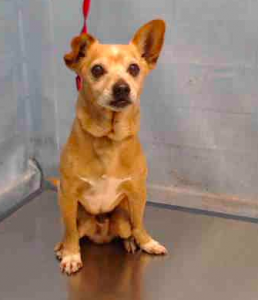Alicia Silverstone's Blog, page 45
June 17, 2020
Guest Blog: Why Animal Rights Activists Must Stand Up for Black Lives
Hi Kind Lifers,
I stand in solidarity with Black lives and those fighting systematic racism and injustice everywhere. Our empathy, compassion, and action are needed right now to be powerful allies for all oppressed living beings. To support all people, we need to acknowledge race and how it impacts people by providing privileges to some, and oppression to others. Take a minute to read this powerful article and t hank you Zachary Toliver for writing this!
With love,
Alicia
–
Fellow animal liberators, I come to you right now—as an exhausted Black man—asking for help working against systemic racism that threatens Black lives. I know personally how motivated you all are, as I am, in pushing for real change. We need to show that energy right now.
Those of us who are active in the animal rights movement have a reason for being powerful allies. If we truly believe in empathy and compassion for all living beings, we can show it today.
Those involved in the animal rights movement know all too well how frustrating it is for people to scoff at our message, even when we’re armed with evidence of blatant injustice.
Think how infuriating it is when videos of mother cows crying out for their stolen calves fall on deaf ears. Think of the frustration we feel when individuals try to justify the abuse when workers punch and mutilate sheep for wool. Or when vile commenters laugh when farmers slit the throats of conscious animals on farms. I feel it, too.
Recognize our aggravation as Black people when the powers that be try to avoid or twist the narrative around the killing of Black people by racists. Just as we know it’s indefensible to use and abuse animals, the killings of George Floyd, Breonna Taylor, and Ahmaud Arbery and the near countless other Black lives taken because of violent bigotry are completely unjustifiable.
This is especially true when these atrocities are recorded for all the world to see. Both the animal rights movement and the Black Lives Matter movement include activists who know that horrible violence takes place off camera daily. But when people view the footage for themselves, they can no longer declare ignorance, only apathy. That’s why we must stand—and march—together.
We know the unfair justice system well. The deck is stacked against anyone working to end oppression.
Both movements also realize that even recorded evidence often isn’t enough to secure a conviction in the U.S. The demonstrations taking place right now are bigger than the four officers who murdered George Floyd on camera. Racists, whether or not they wear a badge, often go unpunished for killing Black Americans.
How many times have we seen obvious cruelty go unpunished in the animal rights movement? Let’s remember that hurt—that grief over the failure of the judicial system—and use it to relate to the events of the Black Lives Matter movement.
There are Black police officers, and there are good police officers of all colors. But people are now marching globally against acts of barbarism that are systemic in many police departments.
The marchers today are demanding the same thing that animal rights activists are demanding: accountability.
The Black Lives Matter movement calls for “an end to the systemic racism that allows this culture of corruption to go unchecked and our lives to be taken.”
This call for an end to unjust oppression is a message that should resonate with every single person pushing for animal rights. Numerous folks at PETA and other animal rights activists know what it’s like to be arrested and detained simply for demonstrating against injustice. All the while, vile perpetrators get off scot-free.
Both of our movements want sweeping, reformative legislation that would help lead to convictions. We all want more transparency in investigations. We want prosecutors and attorney generals who will go to bat for us when we expose cruelty.
Animal rights activists want justice always, so they can understand the importance of defunding militarized police forces that kill Black people. PETA is on the front lines pushing for the defunding of federal and state institutions that funnel money into cruel experiments on animals and that use and often kill animals for entertainment. We know these institutions speak one language fluently, and that’s the language of money.
At the end of the day, we all want to see more funds channeled into positive projects: hospitals, schools, and social programs that help build our communities.
Please, resist detracting from the thrust of these demonstrations with an “all lives matter” perspective.
The idea comes from a compassionate heart—and the idea is true—but this phrase has been weaponized to delegitimize the Black Lives Matter movement.
As an animal rights supporter, you know how frustrating it is when someone says, “How can you care about animals when children are going hungry?” It is not either/or. But when you’re demonstrating against acts like scalding pigs to death in boiling water inside slaughterhouses or running dogs to death in the Iditarod, you’re talking about very specific lives. That focus needs to be maintained.
Right now, Black activists like me are asking people of all colors to listen to our demands and our needs.
Please hear us. Just as PETA wants the world to pay attention to the plight of animals suffering in laboratories, on farms, and in roadside zoos and to educate themselves on the plight of animals under human supremacy, the Black Lives Matter movement wants people to learn as much as they can about systemic racism.
This isn’t the time for “whataboutism.” This is a time to stand with our brothers and sisters against the same cruel system that wouldn’t think twice about throwing you facedown in the dirt at your own protest.
Fellow animal liberators, we know the power of protesting and demonstrating. Use it now.
As a Black vegan, I don’t tiptoe between two identities—I embrace the solidarity of these two worlds. Many others do, too, as African Americans are the fastest-growing population of vegans in the country. Living vegan is as much a lifesaver for animals as it is a political statement against an unjust status quo.
I only ask that my fellow animal rights activists make their voices heard and show solidarity with Black people now, for this is the moment to do so. Everyone has a moral responsibility to stand against hate and unequivocal violence, no matter who the victims may be. Your voice could very well save my life.
About Zachary Toliver
Zachary spent most of his life bouncing around various rural Midwestern towns before finally settling down in the Pacific Northwest—largely because of the region’s phenomenal vegan food. If he’s not writing or playing banjo for a captive audience (aka “the two dogs who live with him”), you can assume he’s hiking in the Cascade mountains, rock climbing, or reading about the complex social lives of fish.
–
Top Photo by Kiana Bosman
June 9, 2020
Action Alert: Farms Animals Need Your Help
I’ve been heartened to see so many communities and individuals step up during this pandemic to help those in need. From providing meals to underserved communities to donating stimulus checks, to fostering and adopting parent-less furry friends, there have been many silver linings to be grateful for. But we have also seen some of the darker corners of our society and economy revealed during this crisis, and today I want to focus on one: the meat industry.
As you may have read in the news, slaughterhouses around the country have become COVID-19 hotspots, as workers are forced to stand shoulder to shoulder rather than the CDC’s recommended six feet apart, causing the virus to spread like wildfire in these facilities. Shockingly, Trump’s recent executive order (more on this below) was supposed to ensure PPE (personal protective equipment) and masks for workers, but reports from workers groups who are in touch with slaughterhouses state this has not happened.
As a result of these COVID-19 outbreaks at slaughterhouses, starting in April many of them began to close down or reduce their workforce. With a heavily reduced workforce, many meat companies found themselves with millions of chickens and pigs on farms but no workers to slaughter them. Disturbingly, some began to mass slaughter these animals on farms using methods that are standards in the industry, despite how horrific they are. These methods include suffocating chickens with foam (which can take up to 4.5 minutes for them to die) or slamming piglets’ heads against the ground, a practice known as “thumping.” These companies could have avoided much of this by simply planning ahead––they could’ve stopped breeding and raising animals and shut down slaughterhouses at the beginning of the pandemic. Due to poor preparedness, there are now thousands of sick and vulnerable workers, and millions of animals are being horrifically slaughtered inside factory farms rather than slaughterhouses and then thrown away. This is incredibly wasteful and terrible for the environment since raising and killing animals is a major greenhouse gas contributor–and they will have been raised (which requires lots of resources land, feed, etc.) and killed only to be thrown into landfills.
Even worse, the industry is asking for bailout money. I’ve signed this petition by Mercy For Animals calling on the USDA to not use taxpayer dollars to bail out these mass killings for an industry that is exploiting animals and humans and to use it to improve practices within the industry and help farmers transition to growing plants instead of animals. I hope you’ll join me in signing too. These petition signatures will go directly to USDA Secretary Sonny Perdue as well as to the trade organizations that represent the meat industry. It’s a simple and quick action you can take right now to help these animals in need.
But the story doesn’t stop there.
Rather than keeping these slaughterhouses closed, President Trump recently signed an executive order to reopen them. This will likely cause further COVID-19 outbreaks at slaughterhouses, hurting the rural communities in which they are located. Disturbingly, this executive order may also help to protect the meat companies from liability, meaning if a worker sues a meat company for unsafe working conditions or inadequate safety measures, the meat company may not be held liable.
Over my years of advocating for animals, I’ve learned a lot of ugly truths about industries that use animals for food, and I’ve been inspired by those working hard to reduce their suffering and ultimately get them out of factory farms. I’ve learned there’s a lot we can do to hold corporations and lawmakers accountable for these issues. But there’s also a simple action we can all take––we can leave animals off our plates and choose delicious, healthy, sustainable plant-based meals! This is a small choice you make three times a day that has a huge impact. It alleviates animal suffering and can also help prevent the next pandemic, as public health officials and organizations agree that factory farms and our raising and killing of animals for food increases pandemic risk. Additionally, it’s optimal for your health, it’s the biggest thing you can do to reduce your carbon footprint., and it re-allocates resources to those that are food insecure.
I hope you all are staying safe and taking care of yourselves during this stressful time. But don’t forget we can take small actions to help those in need––both animals and humans––and today’s petition is one such way.
Photo by Lauren McConachie
May 12, 2020
Guest Blog: Non-Toxic Hair Dyes
Guest blog by our friends at Branch Basics
If you’re a health-conscious person who colors your hair, you’ve probably experienced the struggle of trying to find a safe, natural hair color that actually works. And make no mistake, it is a struggle to match your color with a non-toxic brand that lasts, covers gray, works with your natural tones and highlights, and truly contains no (or very few) harmful chemicals. It’s no wonder so many just give up and hope their healthy lifestyle will buffer the regular onslaught of chemicals. Some of these include cancer-causing PPD, formaldehyde, and ethanolamines; endocrine-disrupting phthalates, fragrance and ammonia; heavy metals, and different forms of toluenes which impact the nervous system, and many more poisons.
I get it because I’ve been there. I also understand that feeling your best isn’t just about eating well and avoiding toxins, you also need to feel good about how you look, which makes the temptation to compromise perfectly understandable. However, thanks to new innovations in non-toxic hair color, you may not have to turn a blind eye to have fabulous hair any longer. While truly chemical-free hair colors are few and far between, our team has managed to find a few impressive products we’re comfortable recommending for all hair types.
1. Greenhare Mud
Greenhare is not a well-known brand, but a member of our team stumbled upon it while researching natural hair dyes…and she was pretty excited about the results.
According to founder Jeannie Wrightson, “Green Hare Mud is pure ground plant materials. We use zero fillers, binders, thickeners, preservatives, or anything in our product or packing that is not clearly listed.” This product is not a hair “dye” per se, because it contains “no lift”. “Lift’ is the chemical reaction required to actually change your hair’s color and thus, requires chemicals. Rather, it’s a 100% natural permanent hair stain made of a proprietary blend of all-natural herbs, barks, berries, teas, and other ingredients that will permanently stain your hair…and cover gray.
According to our in-house source, the application is very easy and the results—in color, gray coverage, and durability—are worth the 30-90 minutes processing time. You can apply this product yourself after familiarizing yourself with the instructions or direct a trusted hair professional. Another thing we love is that it contains virtually no plastic packaging, so there’s very little waste. The only downside is their color palette is somewhat limited, but they cover all the bases (blonde, dark blonde, red, dark brown, very dark brown, etc.) and you can mix and match to create a custom stain. There’s even a “red remedy” if your hair tends to grab too much red from color.
Learn more at www.greenhare.com, check out their Facebook page for testimonials, and YouTube for tutorials.
2. Hairprint
Hairprint is another good option for those with brown or black hair. This product is not a “dye”, rather a patented repigmentation product that returns your hair to its original color with no dyes, chemicals, or harsh toxins. It uses only 8 food-grade ingredients, claims to cause no damage to hair, and boasts the “Made Safe” certification…which we know from experience, is pretty hard to get. This treatment is directed to be applied at home in about 75-90 minutes.
It’s been featured in several beauty publications including Glamour and Goop, and some people swear by it. We haven’t tried it personally, but from our research, it looks like an excellent option for those with darker hair color who don’t have more than 50% gray. However, based on Hairprint’s website and customer reviews it will not work on every type of hair—especially if you have a lot of gray and/or if you have white hair which is apparently very difficult to re-pigment. And some people found the hair preparation and coloring process a bit cumbersome…but we’d say it’s worth the trade-off to avoid the chemicals!
Hairprint states that their product will not re-pigment blonde or red hair (but they’re working on it), and they have helpful instructions for getting the best possible result. They also have hair specialists to help you trouble-shoot as you get the hang of the system, and some salons do carry the product.
Based on the ingredients and their “made safe” certification, Hairprint appears to be a great non-toxic option for all you brunette beauties out there. Check out the ingredients and learn more here.
3. Natural dyes: henna & indigo
Henna’s been around forever and is a tried and true non-toxic semi-permanent option. It won’t damage your hair and real Henna contains no harmful ingredients. And unlike the Henna bars of yesteryear, there are now many pre-mixed Henna-based hair color powders, which make the application a lot easier. The only downsides are it won’t always cover grays, it’s not always permanent, and its color tends to be on the red-side—though you can play around with it and even add indigo (see below) to achieve a more neutral tone. This is a great option for all hair types and colors, especially if you’re seeking a non-permanent color change.
One misconception about Henna is that once you use it you can’t apply any other hair color until it grows out or you get it stripped out. The truth is you can dye your hair with regular color after the Henna has faded for 2-3 weeks, but check with your stylist for their recommendations.
Indigo is a plant-based dye from the indigo plant which is used in conjunction with Henna to create dark browns and black tones with less red. Some people also have success using it to cover gray, especially if it’s left to process long enough. The downsides of indigo are it can take a long time to achieve your desired color, and often requires two steps to use in conjunction with Henna depending upon the color you’re looking to achieve. The good news is, there are a lot of companies who have made the henna/indigo application process a no-brainer, so it’s worth looking into for those with dark hair.
5. All-Nutrient
All-Nutrient is an organic hair coloring line I’ve used with great success for several months. Their permanent hair dyes are free of sulfates, parabens, formaldehyde, phthalates, propylene glycol, MEA, DEA, and other toxic fillers. However, we want to be clear that this is not a 100% non-toxic, clean option, so we highly recommend weighing the pros and cons of using hair dyes before jumping in!
For instance, during the years of healing my endocrine system, normalizing my menstrual cycles, getting pregnant, and nursing my newborns, I chose to skip all hair dyes in efforts to heal and strengthen. Only after my body was stronger, did I make the decision to use hair dyes, and even still I take precautions. After researching many “non-toxic” brands, I settled with All-Nutrient as it seems to be the cleanest out there.
A few tips to lessen exposures if you do decide to dye your hair: going lighter is less toxic than going darker, and obviously doing only partial highlights is much better than doing a full color. I recommend going to a salon that only uses non-toxic/cleaner lines like All-Nutrient and does not do perms, as these contain a lot of toxic VOCs that should be avoided.
6. Naturalique
Naturalique is a professional coloring brand that a hair colorist can utilize. They have some PPD (Paraphenylenediamine)-free color options. Sensitive individuals with mild to moderate gray should begin with just coloring the roots of the visible gray on the part and next to the face, and then color approximately an inch away from the roots in the rest of the hair. This gentler method reduces the amount of product being absorbed directly into the scalp.
Did we leave any excellent non-toxic brands out? Let us know about your experience with natural hair color in the comments below.
Thank you Branch Basics! This is a topic I have been paying attention to for decades!! I brought All-Nutrient to my hair colorist’s attention and we now use it. You need a professional to do this one! I can’t overstate how important it is to find someone actually good at doing your hair! It can be so hard. I would say it’s better to find a hair colorist your trust, that’s an expert, and from there turn them onto a new coloring product rather than going to a “natural” salon. The new salon might offer good products but the new person doing your hair might not be as skilled as applying the color, so it’s hard to say!
However, I am happy to say I have finally found a hair colorist I am excited about, and once I found out about All-Nutrient I brought it to her attention. She found their low-light was great but the high light color was a little too warm. She learned that she needed to tone the high light color down. But obviously your colorist should play around and determine with you the color that works for you. Each company makes different grades of color, so after some playing, my colorist was happy with All-Nutrients results. I’m thrilled there’s a company out there that’s way better than the toxic conventional standard!
Photo by Tamara Bellis
April 24, 2020
Foster or Adopt A Furry Best Friend!
Hey kind lifers!
I’m sending you all love at this crazy time!
It fills my heart with so much joy to read the headlines about the astonishing companion animal foster/adoption on the rise in some cities. However, it’s also alarming to read about shelters being forced to close their doors (for instance, LA County Animal Shelters are currently closed), combined with the growing unemployment rate which is causing more families to surrender fur babies. So, I wanted to share some helpful resources about fostering or adopting companion animals, if you’re lucky enough to be able to stay home and self-quarantine at this time. Having a companion animal alongside you is a serious gift, always… but especially right now when we could use a joy boost! If you’re not ready to make the leap to full adoption, fostering can be really amazing for both yourself (to build a bond with an animal) but it also opens up space in the shelter for more animals looking for a home, while simultaneously building their social skills. If you’re looking for a fur baby to join your home, temporarily or forever, check out these websites:
Animal Rescue Directory is very handy, just click on your state, then the closest location to where you live, and it lists tons of local animal rescue organizations
Adopt-a-Pet is another convenient search engine that pulls up rescue organizations close to your zip code
There are so many amazing buds out there looking for a home! Right now we have two adopted little ones, Tiny and Dixon. We’re hoping to foster some puppies… I’ll keep you posted!
Here’s a quick snapshot of more love bugs looking for temporary or forever homes!
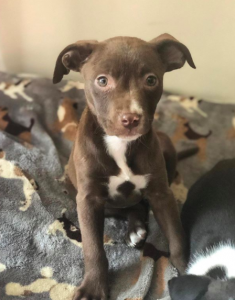
I’m Nova in New Jersey! Click my photo to learn more!
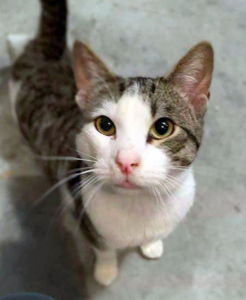
I’m Rupee in Austin! Click my photo to learn more!
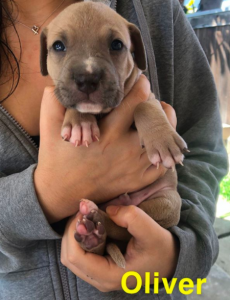
I’m Oliver in Los Angeles! Click my photo to get in touch!
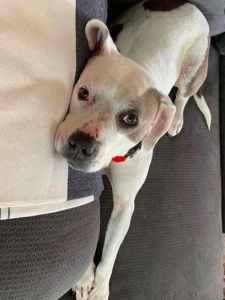
I’m Laila in Los Angeles! Click my photo to learn more!
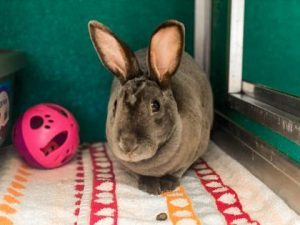
I’m Lilac in Virginia Beach! Click my photo to learn more!

I’m Sugar Cookie in Kansas City! Click my photo to get in touch!

I’m Griffin in Atlanta! Click my photo to learn more!
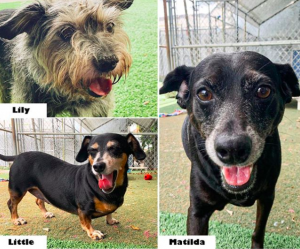
We’re in Miami! Click to get in touch!
#A5362070 and A5362956 in Carson, California. Learn more!
Spread the word and spread the love! Do you have a companion animal? Leave me a comment below sharing its name and a photo!!
Top Photo by Rajesh Rajput
March 31, 2020
Veggies Kids Love!
Kale Drizzled with Umeboshi Vinaigrette
Ingredients
1 bunch kale (dinosaur or whichever kind you prefer)
1/2 to 1 lemon
1/2 tablespoon umeboshi vinegar (ume vinegar)
1 tablespoon flaxseed oil (if you can’t get flaxseed oil, substitute extra virgin olive oil, but the flaxseed oil is way yummier!)
1 tablespoon sunflower seeds (optional)
1 teaspoon shoyu/soy sauce or tamari for gluten-free (optional)
De-stem or chop up the kale.
Bring water to a boil in the bottom of a steamer or a pot fitted with a steamer basket if you want to steam, or fill the pot about halfway with water if you want to blanch. Add the kale for 1 to 2 minutes until the vegetable is just starting to wilt. Transfer to a serving platter. If you blanched the kale, drain out any extra water.
Add the juice of half or one lemon to the kale to taste. Drizzle it on generously!
Optional: toast sunflower seeds on a pan over medium heat for a couple of minutes until they have a nutty aroma and puff up a little. Add one teaspoon of shoyu (soy sauce) for extra flavor.
Pour the flaxseed oil and ume vinegar directly onto the steamed kale. Taste it and see if you want more ume vinegar, it’s very salty so go easy if you do add more! Serve sprinkled with toasted sunflower seeds. Enjoy!!!
*Note – people tend to throw greens in a steamer and walk away, so it’s super easy to overcook your greens. I recommend always erring on the side of undercooking it since it’s so water-dense that it continued to cook a little after being removed from the steam.
As mentioned, you can use this recipe with any kind of green vegetable (bok choy, collards, etc.)!
Video by Kristin Burns
March 12, 2020
Oatmeal, Walnut & Dried Plum Cookies
Makes 10 to 12 cookies
1 cup quick-cooking rolled oats
3/4 cup unbleached all-purpose flour
1/3 cup maple sugar
2 teaspoons baking powder
1 teaspoon baking soda
1/4 teaspoon fine sea salt
1/3 cup maple syrup
1/2 cup safflower oil
1 teaspoon vanilla extract
1/2 teaspoon molasses
1/4 cup chopped dried plums (or other dried fruit)
1/4 cup finely chopped walnuts
Preheat the oven to 350 degrees Fahrenheit. Line a baking sheet with parchment paper or use a silpat.
Combine the oats, flour, sugar, baking powder, baking soda, and salt in a large bowl. In a separate bowl, combine the syrup, oil, vanilla extract, and molasses. Add the wet ingredients to the dry ingredients, and stir to combine. Fold in the dried plums and nuts.
Using your hands, roll tablespoon-size scoops of dough into balls. Place the balls onto the prepared baking sheet, and press down slightly on the balls to flatten the tops. Bake for 8 to 12 minutes or until lightly browned. Transfer cookies to a baking rack to cool completely.
For variety, replace the all-purpose flour with whole wheat pastry flour, barley flour, spelt flour, or a gluten-free baking mix (choose one that does not include baking soda and baking powder). You can also substitute chocolate chips for the dried fruit and any kind of nuts for the walnuts.
Enjoy!
Photo: Flourishing Foodie
Video: Kristin Burns
March 3, 2020
My Favorite Toilet Paper Brands
Paper towels and toilet paper wipe out 94,000 trees in the U.S. every day. We don’t use paper towels in our household, but we need our toilet paper. Fortunately, there have been so many stellar toilet papers coming to the market recently! My go-to choice in the past was always 100% post-consumer recycled paper since that meant it was made entirely from post-consumer waste, aka waste like your old newspaper or cardboard that has been recycled and re-purposed into toilet paper. This is great because it means your eliminating the need for harvesting more virgin materials like trees, and creates a demand for closing the loop on recycling. But then I learned in the processing, it might take more water and potential chemicals to make the recycled paper hygienic. And some post-consumer recycling toilet papers might have BPA (a known endocrine disruptor). Ughhh!!
So now I’m into 100% organic bamboo-based toilet paper. Bamboo is low maintenance. It doesn’t require tending, irrigation, fertilizing, and it grows very quickly. I’ve tried a couple of different brands recently, so to simplify things, I’m breaking down the nuts and bolts of each.
+ made from organic bamboo
+ no dyeing agents of any kind are used; the off-white color of their paper corresponds to the natural color of the bamboo pulp
+ packed in a recycled chipboard box, and delivered in 100% recycled cardboard shipping box
+ made from organic bamboo
+ no harsh chemicals used in processing, Whole Roll uses Elemental Free Chlorine (oxygen, hydrogen, peroxide, and a derivative) to whiten their paper
+ for every pack purchased, a tree is planted along the Gulf Coast regions and islands devastated by storms to help rebuild those communities
+ uses elemental- free chlorine to whiten the paper, not chlorine bleach
+ no inks or scents
+ their bamboo is predominantly grown by small family co-ops bamboo in remote areas of Sichuan Province in China. The farmers plant bamboo on the outskirts of their family farms to supplement their income. The processing of bamboo is all very localized – each village has its own bamboo co-op and pulp factory. Unlike industrial agriculture, no vast areas of land are cleared.
+ Who Gives a Crap donates 50% of their profits to help build toilets for those in need
+ toilet paper comes wrapped in tissue, in a cardboard box (no plastic wrap is used)
Seedling by Grove Collaborative: bamboo
+ sources bamboo from small family farms in China, in an area where bamboo is a native species
+ is grown without fertilizers or pesticides
+ every Seedling order helps fund our tree planting initiative with the Arbor Day Foundation to replant areas across the US affected by deforestation.
+ comes in packaging that’s plastic-free, fully recyclable and made from 100% recycled materials
All of these bamboo options above are exciting to me. I love the philanthropy aspect of Who Gives A Crap, Seedling, and Whole Roll. What toilet or tissue paper are you using these days??
Photo: The Foraged Life
February 18, 2020
Giveaway: Jumpsuit + Sandals
Vildnis is a UK-based company whose motto is “Kind Fashion, Serious Style” I dig that! This jumpsuit is made from Tencel. Tencel is a cellulose fiber derived from sustainably harvested eucalyptus wood which is then processed in a closed-loop system. You can read more about the fiber here! Lenzing, the company producing their Tencel, has been awarded both the European Award for the Environment and the Oekotex Sustainability Award. This jumpsuit is cozy! It’s a size M.

These sandals were bought used and are a size 7!

You can be the recipient of this outfit! Just leave me a comment below telling me about the best day you’ve had recently! I’ll announce the recipient on Tuesday 2/25/2020.
With love,
Alicia
• LIMIT ONE COMMENT PER ENTRY. MULTIPLE COMMENT ENTRIES WILL NOT BE CONSIDERED. (NO INTERNATIONAL SHIPPING, SORRY).
• THIS GIVEAWAY ENDS AT MIDNIGHT PST, FRIDAY 2/21/2020
• AFTER WINNERS ARE ANNOUNCED, ADDITIONAL INSTRUCTIONS FOR CLAIMING YOUR PRIZE WILL BE EMAILED.
• NO PURCHASE NECESSARY TO PARTICIPATE IN THIS GIVEAWAY.
• VOID WHERE PROHIBITED BY LAW.
February 13, 2020
Greening My Laundry Routine
I read recently that 34 million tons of carbon dioxide emissions would be saved if everyone in the U.S. switched to cold water cycles! This got me energized to share some laundry tips with you… it’s something we do on a regular basis, so altering this on-going habit can really make a significant impact!
It’s intuitive and what our parents use to do, but cold water washing, maximizing the water usage by filling an entire full load and air-drying unless absolutely necessary can really make a difference for the planet and also your pocketbook. If you can’t manage a full load, some machines have a load size option (aka small, medium, large) so select the former ones to opt for less water. If you do not have this ability with your unit, try to use a full load to avoid water wasting! The same rule applies to the dryer. According to the EPA, this can save up to $40 a year per household! Obviously, there are some exceptions to this, like diapers, and a few garments that may need the occasional high-temperature wash. Washing full loads in your washer can save 3,400 gallons of water a year! Clothes will even last longer if air-dried since it’s gentler on the garments! A little sunshine never hurts!
January 30, 2020
Cheesy, Oozy Guacamole Bean Dip
This dip is quick, easy, and delicious — the perfect thing to bring to a party. Make it in a glass dish to display all the pretty layers. Great for meat-eating friends.
Serves 8.
Ingredients:
1 (16-ounce) can refried beans
3 large avocados
3 tablespoons fresh lime juice
2 (8-ounce) containers nondairy sour cream (or you can make your own cashew sour cream*)
1 packet taco seasoning (I use Bearitos, but if you are avoiding all white sugar, make your own mix with chili powder, ground cumin, onion powder, hot paprika or cayenne, and salt)
1/2 cup diced mild green chiles, drained
1/2 cup sliced black olives, or more if you like
5 tomatoes, chopped
2 cups shredded vegan Cheddar cheese
Directions:
Preheat the oven to 350 degrees.
Spread a layer of refried beans in the bottom of an 8 inch by 8 inch quart glass baking dish.
Pit and peel the avocados, and place in a bowl. Mash the avocados together with the lime juice, and spread on top of the refried beans.
Stir together the sour cream (or cashew sour cream*) and taco seasoning, and spread over the avocado.
Sprinkle the chiles over the sour cream, and top with a layer of black olives.
Add the tomatoes, and sprinkle with the cheese.
Heat the dip for 15-30 minutes or until heated through and the cheese is a bit melted.
Serve warm or at room temperature!
*if you prefer making your own cashew sour cream:
1.5 cup cashews
3/4 cup water
2 tablespoons fresh lemon juice
2 teaspoons apple cider vinegar
1/2 teaspoon fine sea salt to taste
Soak the cashews overnight in a bowl filled with water (ideally for 8 hours, or you can quick-soak for an hour in boiling water). Rinse and drain.
After soaking, blend the cashews at high speed with the remaining ingredients in a blender. You may want to pause and scrape the cream down as you go, to make sure you get it all mixing. Add a little water when you need (albeit very little!)
Place the cream in a container and pop it into the fridge. This makes 2 cups and will keep in the fridge for 1 week!
Photo by Victoria Pearson
Alicia Silverstone's Blog
- Alicia Silverstone's profile
- 85 followers


